Since potassium chloride is not salt (sodium chloride), those on a salt-restricted diet can use potassium chloride as to substitute for softening salt.
Potassium chloride can be slightly more expensive than salt, and the unit is often regenerative because potassium chloride is not as efficient as salt.
If potassium chloride is used instead of salt, we recommend increasing the water hardness by 20%. If the consumer mixes salt and potassium chloride, there is no harm to the softener.
Key Points
- Potassium chloride can be used as a substitute for sodium chloride (salt) in a water softener for those on a salt-restricted diet.
- Potassium chloride is not as efficient as salt and may result in higher costs.
- Mixing salt and potassium chloride is not harmful to the softener.
- Softeners and conditioners react effectively with either sodium chloride or potassium chloride.
- High levels of impurities in softening salt tablets can cause buildup in the reservoir or lead to malfunction.
- Sodium chloride comes in three different forms: pellets, crystals, and block salt.
Softener Salt vs. Softener Potassium Chloride

Water softeners and conditioners react effectively with sodium chloride or potassium chloride.
However, some softening salt tablets sold in a supermarket or home improvement store have high levels of water-insoluble solids or impurities.
This insoluble liquid can build up in the reservoir or cause your softener to malfunction.
If you see buildup, the brine tank should clean frequently.
So when you go shopping for the salt softener, look for the label on the salt flake sack that indicates that you are getting the highest purity level.
Sodium chloride can come in three different forms such as pellets, crystals, and block salt.
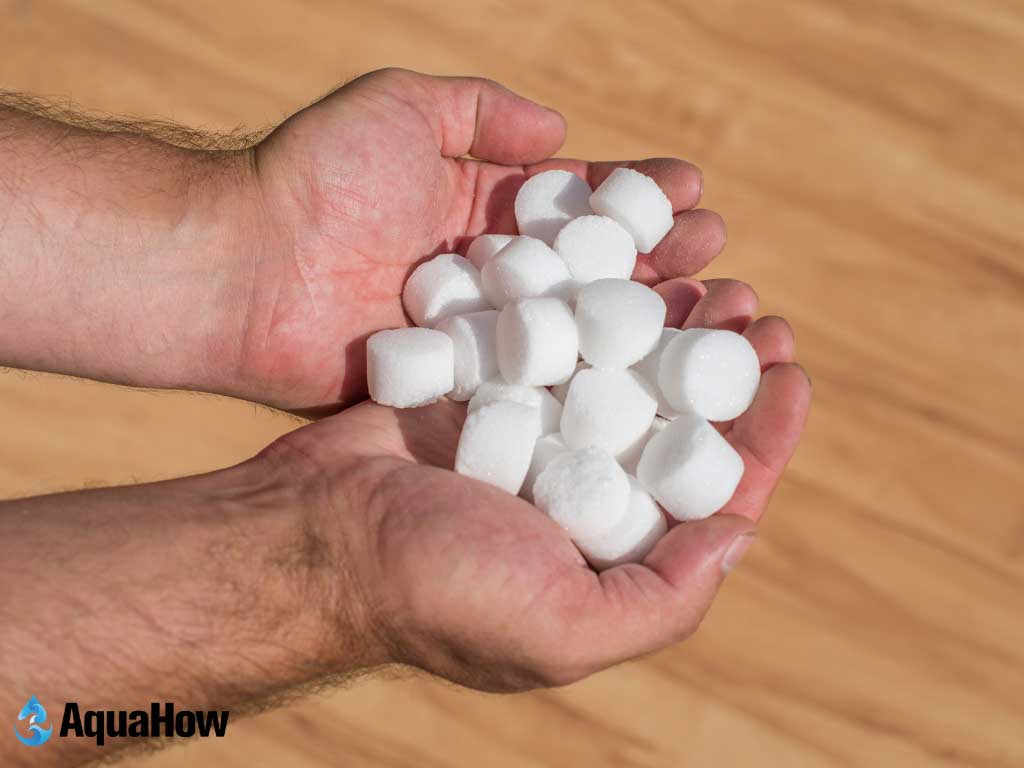
- Evaporated salt pellets have the highest purity of the above salts and are generally the most expensive. The higher the purity of salt, the less insoluble the liquid in the water, which means less water is likely to build up at the bottom of the tank and must clean later.
- Solar salt pellets are usually sold in stalks or in the form of flakes, which are formed by the evaporation of seawater. Also, it is more soluble than rock salt but evaporated salt will not work when your water hardness level is very high. Most solar salt brands contain 99.6 percent pure salt.

- Rock salt is similar to small rocks or pebbles. Although this salt method is cheaper, we do not recommend using it as it contains a high amount of calcium sulfate, which means that it does not dissolve well in water and can cause maintenance headaches.
- Block salt should not be used if the water level in the brine tank is high, as recommended by your Water Tech dealer to ensure that the blocks are entirely submerged to make maximum brine.
How Does A Potassium Chloride Water Softener Work?
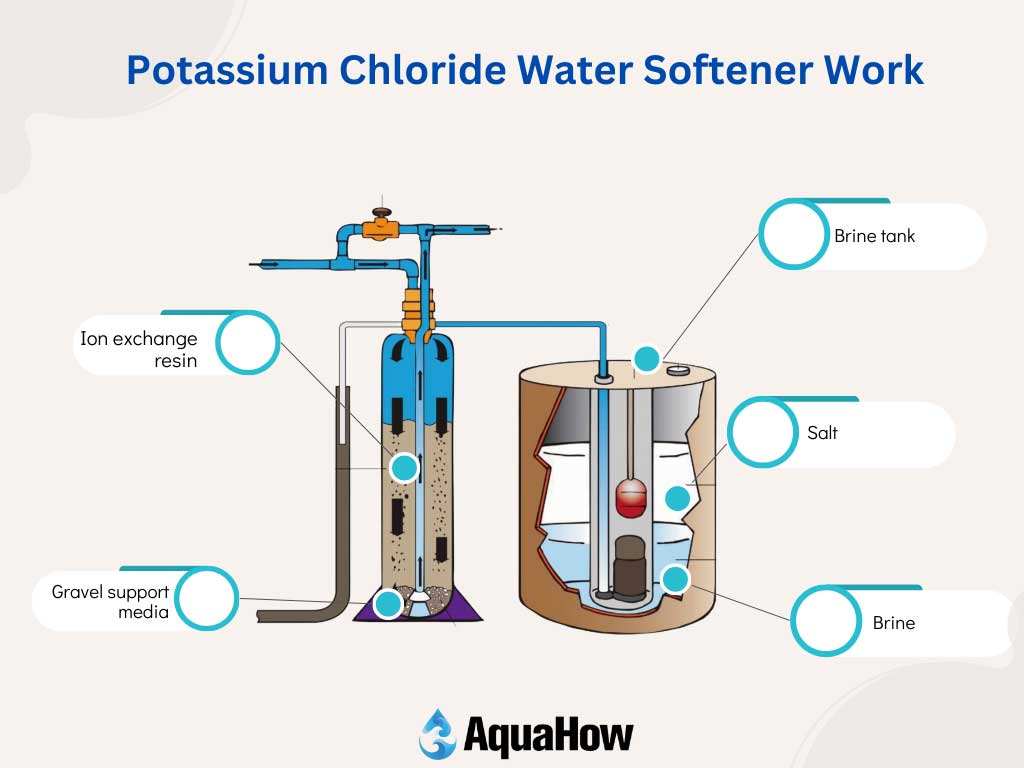
As we know, potassium chloride water softener is similar to salt-based water softener.
They both work through an ion exchange process. In short, the two minerals that make up hard water, magnesium, and calcium, are positively charged.
A potassium chloride water softener drives hard water filled with positively charged magnesium and calcium through a mineral tank containing negatively charged resin beads.
When a positively charged ion comes in contact with a negatively charged ion, they bind.
Further, water does not have magnesium and calcium as its antidote.
Of course, this is similar to salt-based water softeners, but there is one big discrepancy.
Does Use Potassium Chloride Water Softener Have Side Effects?
Well, if you use more potassium chloride than sodium chloride, the result – the water you end up drinking and using daily – will contain potassium instead of sodium.
The American Heart Association has plenty of research articles on the dangers of increasing sodium levels.
For example, the water hardness level of 10 grains per gallon, which is average over large parts of the U.S. continent, is 300 milligrams of sodium per day.
But, if you use potassium substitute for sodium, you consume extra potassium, which is not as dangerous as consuming sodium when consumed in excess.
Potassium Ion Exchange
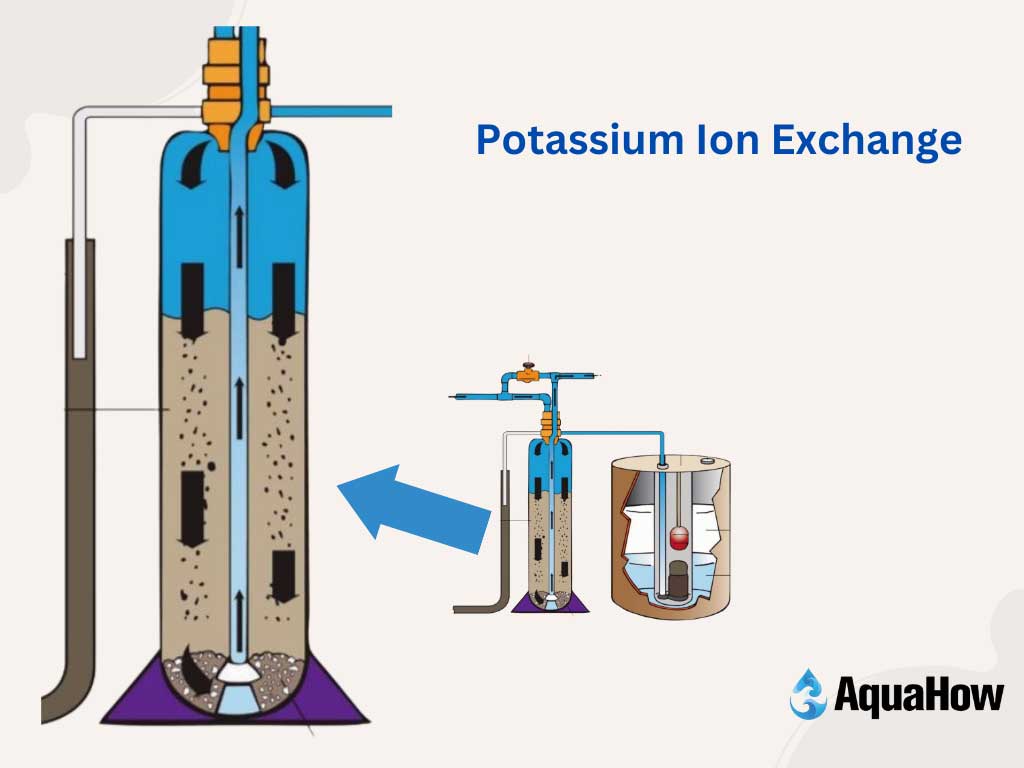
The process of potassium ion exchange softens hard water, as the name implies.
Also, calcium, magnesium, and potassium are all essential elements present in the solution as ions.
As hard water flows through the potassium chloride resin, the magnesium and calcium ions in the water switch positions with the potassium on the resin.
As a result, minerals are trapped, and potassium ions are released along with the purified water leaving their places on the resin to make room for the minerals.
Hyperkalemia

Hyperkalemia is a term used to describe the presence of excess potassium in the blood.
According to the World Health Organization, “potassium intake from drinking water is unlikely to affect healthy individuals adversely.
” However, potassium-containing drinking water problems can include people with kidney disease, the elderly, and infants whose kidneys do not function as methodically as they once did.
Especially, people with heart disease, high blood pressure, and diabetes, and those taking certain medications are at increased risk for developing hyperkalemia.
Adverse Effects
Drinking water with potassium chloride can have adverse effects if the water has high mineral content.
As the mineral content increases, potassium is released into the purified water.
According to the World Health Organization, potassium poisoning can cause chest tightness, nausea, vomiting, diarrhea, shortness of breath, and heart attack.
Therefore, the World Health Organization endorses that potassium supplements not be given to toxic individuals, except under close medical supervision.
Is Potassium Chloride Water Softener Safe For Plants?
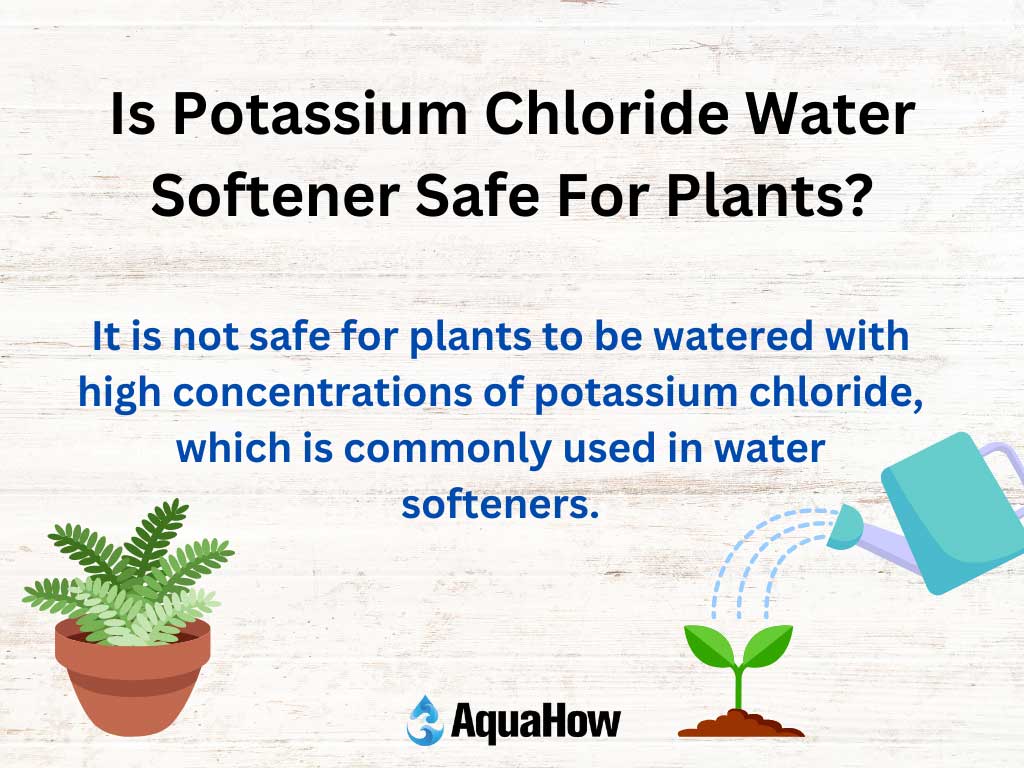
Softened water can have many benefits around your home, from reducing the amount of soap needed to wash your dishes and clothes, extending the life of your water with the use of equipment, and saving money on energy bills.
So, now let’s see that potassium chloride water softener is safe for plants.
Sodium and Ion Exchange
The most important thing for water softeners is to use sodium or salt.
Many softeners use sodium for the ion exchange process to replace calcium and magnesium hard water minerals.
After processing through your water softener, the amount of salt in your water will vary depending on the hardness level of your water, but it will certainly not be salty.
Drinking lukewarm water usually gives you less than three percent of your daily sodium intake.
When your water softener is working properly, it only adds 30 milligrams of sodium per gallon.
An 8-ounce glass of low-fat milk usually contains 120 milligrams of sodium, so it’s easy to see that you are not drinking salty water.
Keeping Your Lawn and Garden Looking Great

Most water softeners have a bypass valve that can use when watering your lawn and garden outside.
Also, it ensures that untreated water is used on your plants.
Since you may find that your water tap is not connecting to your water softener, it is excellent to check with your water treatment technician.
On the other hand, if you are sad that sodium affects your indoor plants, there are a few simple ways to ensure that your plants are healthy and happy. So, it is better to follow these things.
Collect Rainwater
You can not only conserve water but also keep your indoor plants happy by adding rainwater. Rainwater can collect in a barrel or container.
Rainwater is generally clean and naturally soft, so it does not contain too many soluble minerals, which can keep your houseplants healthy.
Dechlorinate Your Water
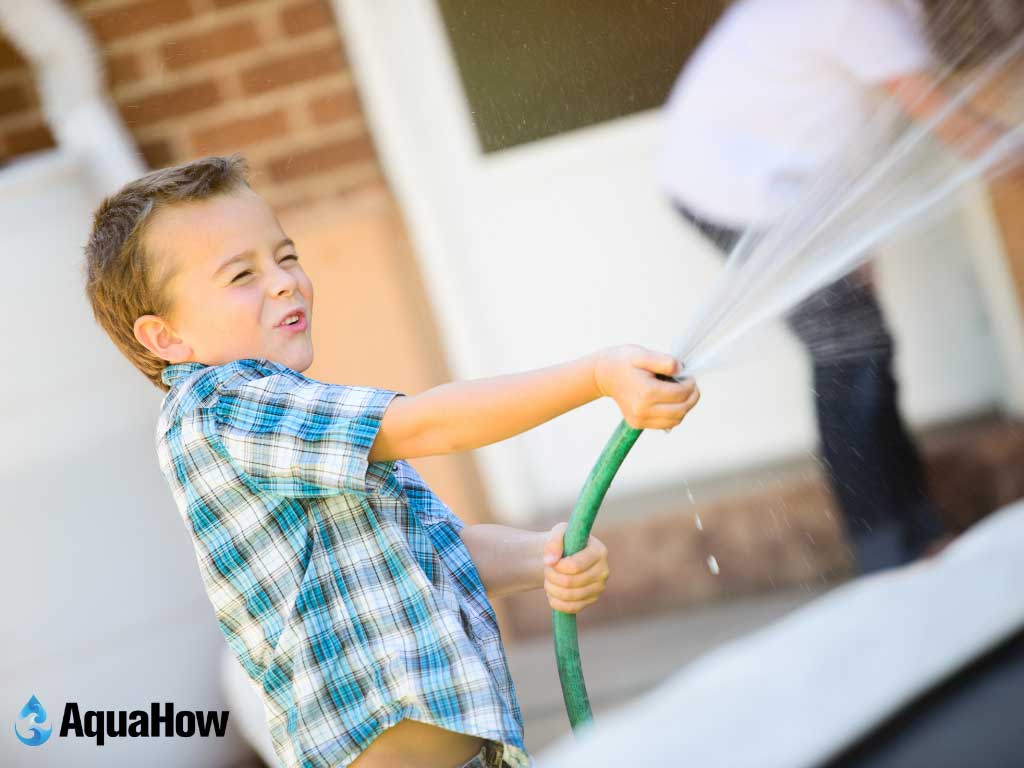
Some plants cannot tolerate chlorinated water.
If your tap water has a high capacity of chlorine that can detect a high odor or taste, you should dechlorinate your water.
You can do this by letting it sit in your watering can for a few days to dissolve the chlorine.
Switch to Potassium Chloride
Most softener models can use potassium chloride tablets instead of the usual sodium chloride in the brine tank.
Especially, potassium is an essential plant nutrient.
Therefore, it is safe to use potassium chloride softened water for your backyard and soil.
Monitor Your Plants
Finally, the best way to keep your plants healthy is to monitor their progress.
Your plants will give you tips, and the minerals in the hard water may allow some plants to thrive, but some plants will not work well.
Other plants struggle with soft water.
It means you need to pay attention to the water quality and look for clues to ensure that plants are healthy.
Continue Reading…

